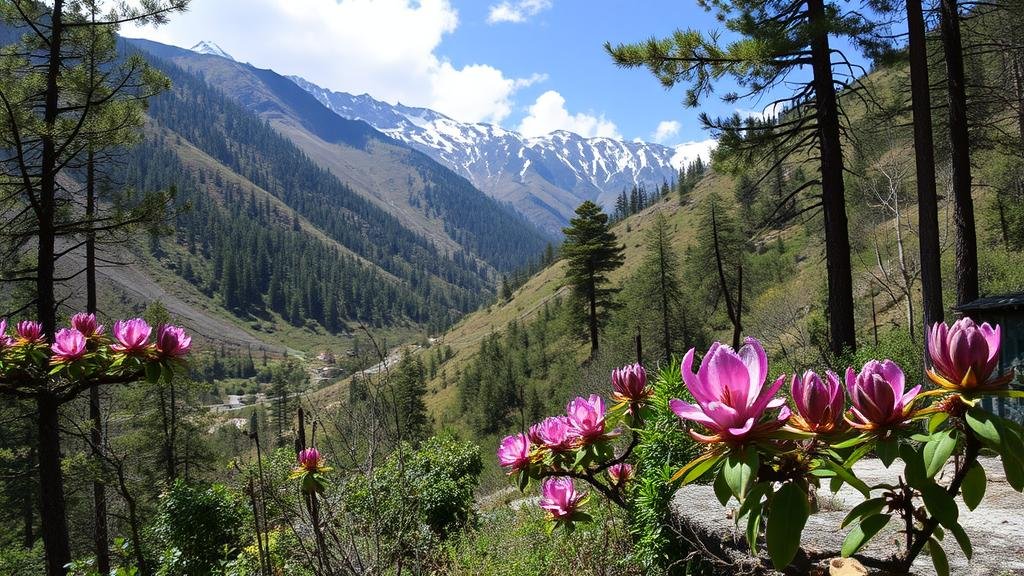Exploring the remote Himalayan valleys for rare rhododendron species.
Exploring the Remote Himalayan Valleys for Rare Rhododendron Species
The Himalayan region, with its stunning landscapes and unique ecosystems, is a treasure trove of biodiversity. Among its many wonders are the rare and exquisite species of rhododendrons that thrive in the remote valleys. This article delves into the captivating world of these flowering plants, exploring their ecological significance, cultural importance, and the thrilling journeys required to discover them.
The Significance of Rhododendrons
Rhododendrons, belonging to the Ericaceae family, are not only admired for their vibrant blooms but also play a crucial role in their ecosystems. provide habitat and food for numerous species, including bees and other pollinators that are essential for maintaining biodiversity. Some key points about their ecological role include:
- Rhododendrons flourish at various altitudes, with some species found between 1,200 and 4,000 meters above sea level.
- These plants serve as a cornerstone for specific habitats, supporting both flora and fauna.
- Their leaves have antifungal properties, which help reduce diseases in surrounding plant species.
Also, rhododendrons have a significant cultural impact in regions such as Bhutan, Nepal, and India, where they are often associated with local traditions and folklore. The stunning pink and red flowers are celebrated in festivals, symbolizing beauty and resilience.
Rare Rhododendron Species in the Himalayas
The Himalayas host over 200 species of rhododendrons, with many rare and endemic varieties. Some noteworthy species include:
- Rhododendron arboreum: The national flower of Nepal, this tree rhododendron can grow up to 15 meters tall and features striking red flowers.
- Rhododendron campanulatum: Known for its bell-shaped blossoms, this species thrives at high altitudes and is sought after by plant enthusiasts.
- Rhododendron lepidotum: This dwarf rhododendron is renowned for its dense foliage and vibrant pink flowers, often found in the forests of northern India and Nepal.
Exploring these species requires a deep understanding of their habitats, growing conditions, and conservation status. Many of these plants face threats from climate change, habitat destruction, and over-collection, making their preservation critical.
Journeys into the Remote Valleys
Venturing into the remote Himalayan valleys where these rare rhododendrons grow is no small feat. Treks to these breathtaking locations often involve arduous journeys through rugged terrains. Here are some popular trails for rhododendron enthusiasts:
- Ghorepani Poon Hill Trek (Nepal): This popular trek not only offers stunning panoramic views of the Annapurna mountain range but also showcases diverse rhododendron species in bloom during the spring months.
- Sandakphu Trek (India): This journey through West Bengal leads adventurers to viewpoints of four of the worlds five highest peaks while traversing rhododendron-rich forests.
- The Singalila Ridge Trek (India): Known for its sprawling rhododendron forests, this trek provides excellent opportunities for photographers and plant lovers alike to observe and document these remarkable species.
These treks typically take place from March to May, coinciding with the blooming season. Travelers should be prepared for altitude changes, varying weather conditions, and the need for proper trekking gear.
Conservation Efforts
With the increasing threats posed to rhododendron species, numerous conservation efforts are underway. Organizations such as WWF (World Wildlife Fund) and various local NGOs work diligently to protect these unique ecosystems. Some key initiatives include:
- Restoration of native habitats to enhance biodiversity.
- Community-based conservation programs that encourage local populations to engage in sustainable practices.
- Research and awareness campaigns about the ecological and cultural importance of rhododendrons.
Plus, many regions are implementing stricter regulations against poaching and illegal collection of these plants, promoting sustainable tourism practices that benefit both the environment and local communities.
Actionable Takeaways
For enthusiasts and travelers interested in exploring the rare rhododendron species of the Himalayas, consider the following tips:
- Research and choose treks that align with your interests, fitness level, and timing for optimal blooming.
- Engage with local guides who possess knowledge of the flora and fauna and can provide insights into the cultural significance of the region.
- Support conservation efforts by participating in eco-tourism or visiting local conservation projects.
Embarking on a journey to discover the rare rhododendrons of the Himalayas not only enriches personal experience but also contributes to the preservation of these magnificent species for future generations.



